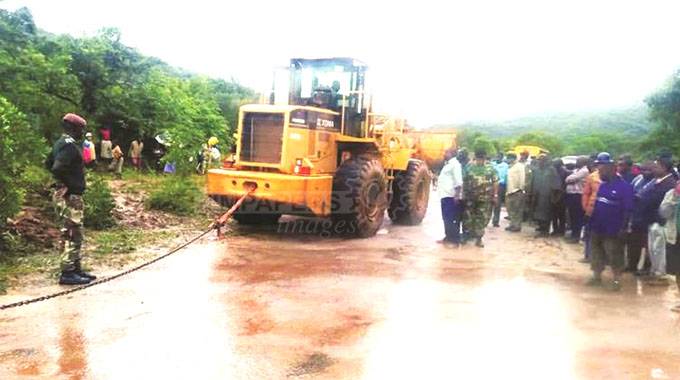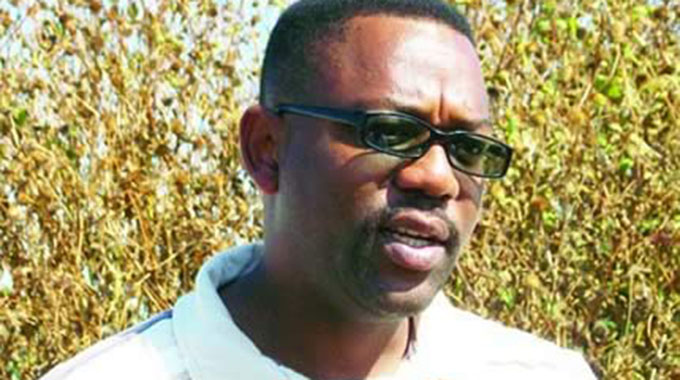Editorial Comment: Let’s fill the gap in civil protection

Zimbabwe is not often hit by cyclones, but when they do move this far inland they can cause more deaths and destruction than they should, largely because their rarity makes communities complacent and knowledge is forgotten.
The Civil Protection Units are far more knowledgeable and a lot of effort is put into making sure they can do their job properly. But getting the message through right down the line, especially to communities that have never experienced a bad cyclone or bad flood, is difficult along with the normal reluctance of any family to leave home because “it won’t be that bad”.
Yet with the modern communications now readily available, and the established infrastructure such as schools that can be used as shelters in an emergency, there is no reason for us to see more than 70 people killed next time a cyclone hits.
Almost all those killed by Cyclone Idai drowned or were buried in under mudslides, the heavy rains round the eye of cyclone causing far more damage than the wind. The resulting floods were worse than most communities, even those in areas prone to flooding, have experienced for years.
We need to get the generally good planning at provincial and district level right down to village level, for a start, so at least someone in each village knows what to do. And we need to back this up with clear orders and directions in the few hours we have between confirmation that a cyclone is headed into a particular area and the time it actually hits.
Everyone now knows that the big secret is evacuating vulnerable communities or families. In areas with frequent hurricanes, typhoons or cyclones there is now a well-oiled machinery for evacuation.
For example in the US, the governors of the states along the Caribbean and Atlantic coasts have been given enormous emergency powers to order the evacuation of wide swathes of their states and can even use their state national guard troops, who have been automatically mobilised as the hurricane approaches, to enforce those orders.
But from bitter experience most people are ready to move, if upset about doing so, and obey orders and go to their assigned shelters. Some coastal communities with memories of the last time have even installed sirens and run drills.
We can easily do the same. Around the world the favourite shelter is a local school. This is because most schools are built to approved standards, are not built in places subjected to flooding and have basic sanitation facilities that can cope with hundreds of people. Indeed, they are ready made for evacuees for the couple of days they need to stay away from home.
Not everyone needs to be evacuated in most parts of Zimbabwe in the path of a cyclone. Indeed for the majority the best advice is stay put, but if they live in an area likely to be flooded, or likely to be engulfed by mud, they need to be moved before the flood or the mudslide. This might well require more detailed surveys of communities and even where people are building where they should not be, they must still be identified and given advice.
We noticed that the authorities went beyond radio this time and involved the mobile phone companies in sending advice and messages. Obviously the phone companies are willing to co-operate and we think far more can be made of this system, with orders to selected communities to evacuate or careful instructions to everyone in Chimanimani say, who lives within 100m of a river, to move out.
Hardly anyone in Zimbabwe now lives more than 5km from a school and most are much closer, so evacuation centres exist. Such specific instructions can go out with the more general advice not to cross flooded rivers and the like.
At the same time more needs to be done to prepare even the smallest community to cope when it is cut off and facing near disaster. And to our mind this is perhaps the biggest gap in our civil protection system. Those with the knowledge are not always where that knowledge needs to be applied urgently.
Here a lot of use can be made of local leadership, both traditional and elected, along with that network of overworked, but competent mature administrators, the school heads. Everyone, for example, at some time during a year visits the local school and many do that more frequently.
It should not be difficult for a suitable expert to be available to give a brief talk at sports days, speech day and the like on disaster preparedness. It might be a bit boring on a sunny afternoon, but the message will hopefully be remembered when the river floods.
And headmen and elected councillors should be able to create a network of suitable volunteers who can attend a day-long course on what to do and who they should phone. Modern communications mean that no community needs to be isolated, but the person reporting in and seeking help needs to know who to phone and what to report.
And just as important there would be someone whom the district authorities can phone when there is a cyclone or flood warning. If there is at least one person in every community with the required knowledge then it is relatively easy in those few hours before the storm hits or the river floods to get the word out, track down the most vulnerable and ensure everyone is either secure in their own home or has been moved to shelter if that home is likely to be washed away or buried.
The re-opening of roads and bridges, the movement of food aid, the repairs to essential services are probably a lot better organised these days, and we expect the damage from Cyclone Idai to be repaired at speed. But the one lesson we must learn is that not every person and not every community hit by the cyclone knew what to do. That gap now needs filling. It will not be easy, considering human nature, but it must be done.











Comments